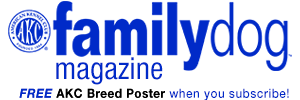
He seems like someone who had to have been conjured up by an adventure novelist— space explorer, pro football player, scholar, educator, musician, inspirational speaker, chemist, engineer, writer, wanderer.
Leland Melvin has been all of those things, but he is very much a real person and, despite the more than 565 hours he logged in space, surprisingly down-to-earth.
On top of all of that, Melvin is also a man who loves dogs. Rhodesian Ridgebacks hold a special place in his heart.
The world got to know him as the “coolest astronaut in the galaxy” through an iconic 2009 photo that, thanks to the web, became nearly as famous as Betty Grable’s World War II pinup poster. No one could forget Melvin’s official NASA portrait, known as the “Astro Dog” shot.
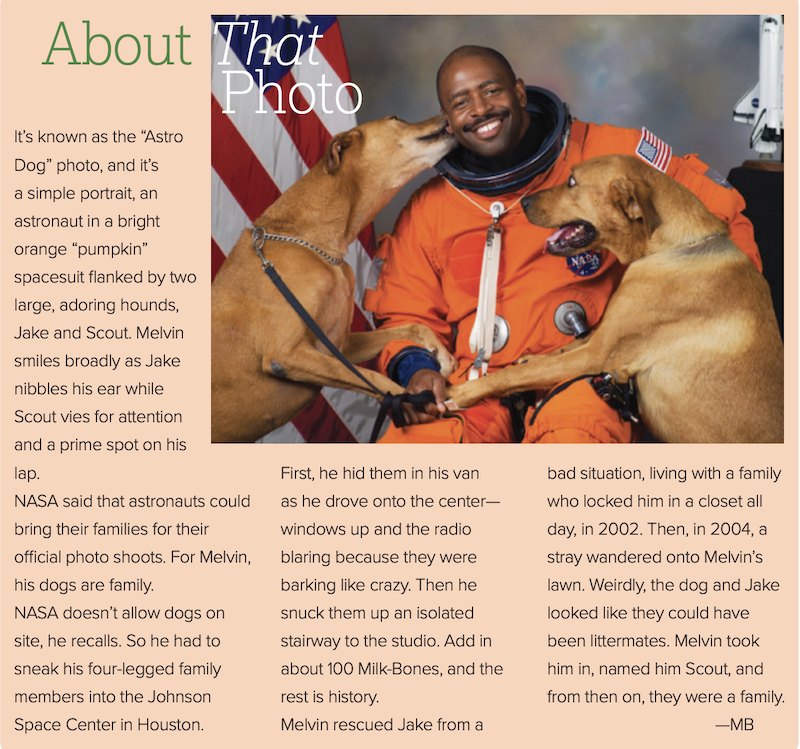
AKC Family Dog had the opportunity to chat with him about dogs, life, and his part in the second season of the Netflix series Dogs.
The documentary follows the retired astronaut as he attempts to climb 14,000- foot Columbia Point in Colorado. The U.S. Department of the Interior placed a plaque at the peak in memory of the seven astronauts who died when the space shuttle Columbia broke apart upon reentry in 2003. Melvin’s goal: Hike up there to touch the plaque in honor of his friends and mentors.
Bad weather forced him to stop when he tried with his first dog, Jake, a Rhodesian Ridgeback mix. Netflix recorded his second attempt, years later, with his new pack, Ridgebacks Zorro and Roux.
FD: Tell me how you chose this breed.
Leland: I always loved Rhodesian Ridgebacks because they were athletic, they were smart, they were loyal, and they love to travel. When I traveled first with Jake and then with Scout, it was just like a road crew, a bond, so I wanted a similar type of dog.
FD: Both Jake and Scout died around 2014, and you had no dogs for a few years?
Leland: I had been living in an apartment that didn’t allow dogs. In 2017, I moved to this farm in Lynchburg, Virginia. As soon as I moved here, I knew it was time to get another dog.
FD: How did you find Zorro?
Leland: I called the president of Rhodesian Ridgeback Rescue, and I said, “Hey, do you guys have any puppies?” She just started laughing. She said, “This is Rhodesian Ridgeback rescue, OK? We usually rescue dogs that aren’t wanted. Older dogs.” And I said, “Well, OK, I’m going to keep looking for some puppies, but I’d like to get some rescues.” A week later, she calls me back, and she says, “Mr. Melvin, I stand corrected. We just rescued a mother from Texas, and she has 14 pups in her belly. … And you can have the pick of the litter.” I got Zorro at 8 weeks, flew up to Boston to get him.
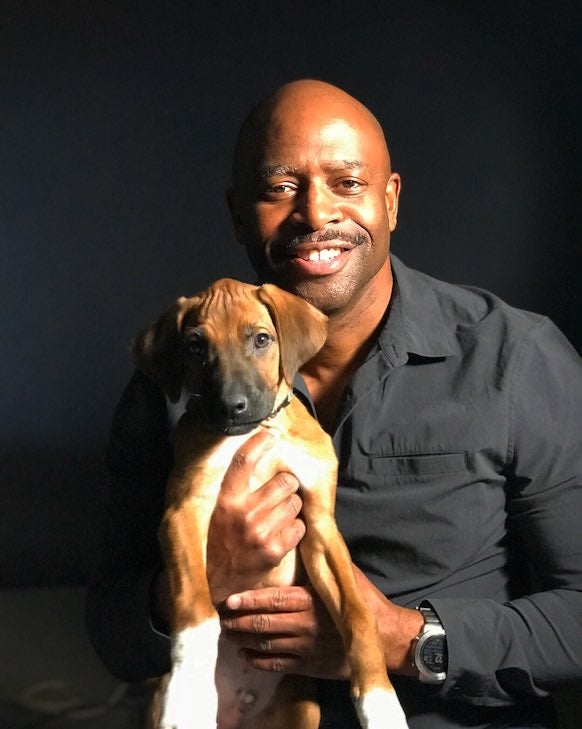
FD: And you remember when you first met Zorro?
Leland: She had turned their summer cottage outside Boston into the puppy playland. They were born there, and they had all of these trapezes and cans on strings and things to get them socialized to noise. When I walked in, I think there were 12 dogs left. They ran over to me, and then they all ran to their little playground, and then they jumped in their big bed and went to sleep. She said, “I think the dog for you would be Zorro.” He had a little red bow and a little red collar. And I walked over, and I just felt connected. He had these really big, white feet for his body. They were huge.
FD: Why did the rescue pick him for you?
Leland: I’ve been doing speaking ever since I retired from the astronaut corps in 2014. I wanted dogs to take on the road with me and actually have at my presentation to interact with children. I couldn’t do that with Jake because he would let you pet him, but then he’d bite you if he wasn’t feeling right. I guess she saw something in Zorro that might be good for my traveling and speaking.
FD: Then, a year later, you went back to the rescue and got Roux.
Leland: Roux was 1 year old, and she had been through a lot of trauma; lots of things went on with her. She was really sick and malnourished. There was a family who fostered her, and they had a mixed Rhodesian and a brown Lab. They were playing in the yard, and I brought Zorro into the mix. And they sniffed a little bit, and all took off, like gazelles, chasing each other around the yard. She’s the one, I said.
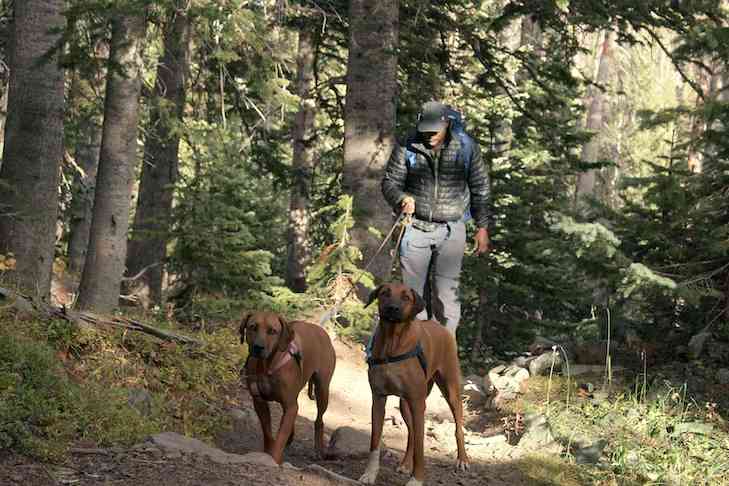
FD: How do the dogs differ?
Leland: Once I brought Roux here with Zorro, she’s been fine, just a great, great dog. She’s a hunter, though—a hound that will go after anything. Catch the scent of a squirrel, run up a tree, get a groundhog, a deer, everything, whereas Zorro would just look, Oh, OK. You go have fun. I’m just going to hang out here. I called Zorro Shadow because he’s always by my side. And Roux’s, like, always somewhere else. So Shadow and Anti-Shadow.
FD: Do you find the dogs make it easier to reach the kids during your speaking engagements?
Leland: Dogs break the ice with young kids, with old kids, with everyone. Anytime I bring the dogs on with me, there’s another level of excitement that I see. They’re like, Oh, he’s got the dogs. Those are the picture. They’re expecting that these are the dogs in the “Astro Dog” picture. It was so long ago, but I guess that picture is living its own life on the internet.
FD: You have this custom-made camper that you designed for the dogs, and you travel with them a lot. What’s it like when you get out on the road together?
Leland: You never feel alone. You always feel like they’re happy. They’re smiling. When you get out, you take them for a walk in this new place. It has new smells. It’s this moment of Zen where your family is with you, no matter where you go. And the dogs are happy to be along, again, along for that journey. It doesn’t matter where you are going.
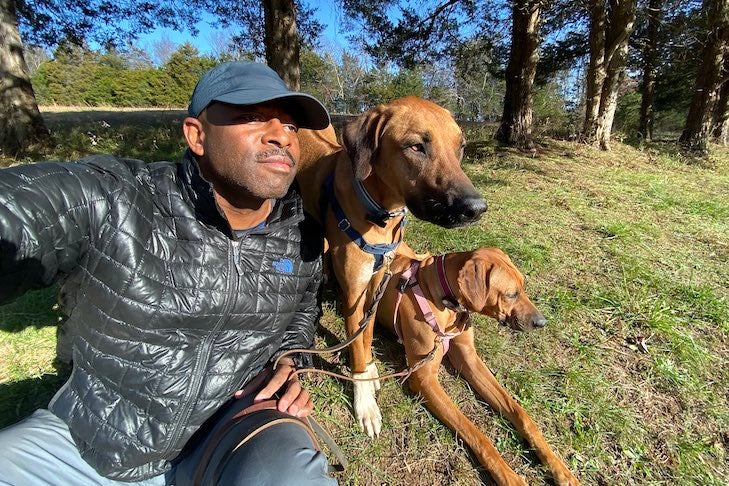
FD: In your book, Chasing Space, you mention that having dogs breaks the ice with strangers.
Leland: I was having lunch in this restaurant in Idaho, and the waitress, a young white girl, had never met a Black person before. She had all these misconceptions. Then, when we walked out to my van, I had a different camper van then, with Jake. To see her face change, because now I was even more OK because I had this dog. It was priceless. And I think that another part of dogs is they bring people together who may never have been brought together. And then you can tell stories, the ability to have a conversation. And then you can change. People can change.
Responses have been edited for length and clarity.
 This article originally appeared in the award-winning AKC Family Dog magazine. Subscribe today!
This article originally appeared in the award-winning AKC Family Dog magazine. Subscribe today!


